Stow in Brief
The Story of Stow
Written for the Stow Town Website by Stow Things author Ralph Fuller on behalf of the Stow Historical Society. Historical photos from town archives. Contemporary photos by the author.
Stow in Brief
From its earliest settlement by English colonists in the 1600s through the first half of the 1900s, Stow was first and foremost a farming community. In 1686, its population of 37 settlers occupied a dozen or so farms. By 1870 the town had 150 farms, focused mostly on beef, milk and hay production, and counting 600 cows. By 1900 it had fewer farms, but some 1,000 cows.
At the same time, its waterways supported mill operations that grew into significant textile mill centers. One of the oldest woolen mills in the country was established at the Assabet River village of Rock Bottom. On both sides of the river downstream, the area of Stow and Sudbury called Assabet Village hosted a substantial mill community.
As farms and mills declined in numbers – and the automobile expanded America’s mobility following World War II – Stow began transitioning from an agricultural center to a countrified residential suburb. Today, with a population of nearly 6,700 residents, its farm community encompasses three commercial produce farms and a number of “gentlemen farms” that raise horses and other livestock as avocations. Its residential structures include more than 2,000 single-family dwellings and another 400 condominiums and multi-family homes.
And, Stow has orchards. As the 20th Century began, some Stow farmers turned to orchards, raising apples and other fruits. More than a dozen commercial orchards operated in the town. Today, five working apple orchards operate in Stow, emphasizing the “pick-your-own” experience that, on some fall days, draws as many as 10,000 apple-seekers from throughout New England. Other entrepreneurs took a different approach to utilizing former farmland. Stow’s first golf course was the nine-hole course built at Assabet Lodge in the 1920s. A second, Mapledale Country Club, soon followed – as one of the first courses established for African-American golfers. Quickly, it began serving both black and white players. Today, Stow is a significant golfing center with four courses encompassing 81 holes.
Photos
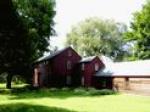 Boaz Brown House- An early Stow settler, Boaz Brown, Jr., built this house on Harvard Road in the 1690s. Restored in the 20th Century, it's listed on the National Register of historic places.
Boaz Brown House- An early Stow settler, Boaz Brown, Jr., built this house on Harvard Road in the 1690s. Restored in the 20th Century, it's listed on the National Register of historic places.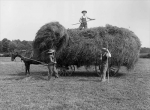 Hay Wagon- Cattle and the hay to feed them were long mainstays of Stow's economy. Here, Mr. Beede and his helpers work the Beede farm, today the site of Honey Pot Hill Orchard.
Hay Wagon- Cattle and the hay to feed them were long mainstays of Stow's economy. Here, Mr. Beede and his helpers work the Beede farm, today the site of Honey Pot Hill Orchard.
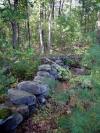
Stone Wall- Where once they divided open farmland, today many of Stow's rock walls run through re-grown forests
.
.
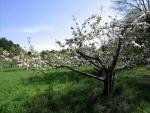
Apple Tree- In 21st Century Stow, the town's five apple orchards are both icons and economic mainstays.
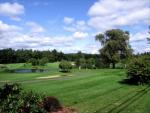 Golf Course- Stow's four golf courses- this is Butternut Farm Golf Club - draw golfers from throughout New England.
Golf Course- Stow's four golf courses- this is Butternut Farm Golf Club - draw golfers from throughout New England.

